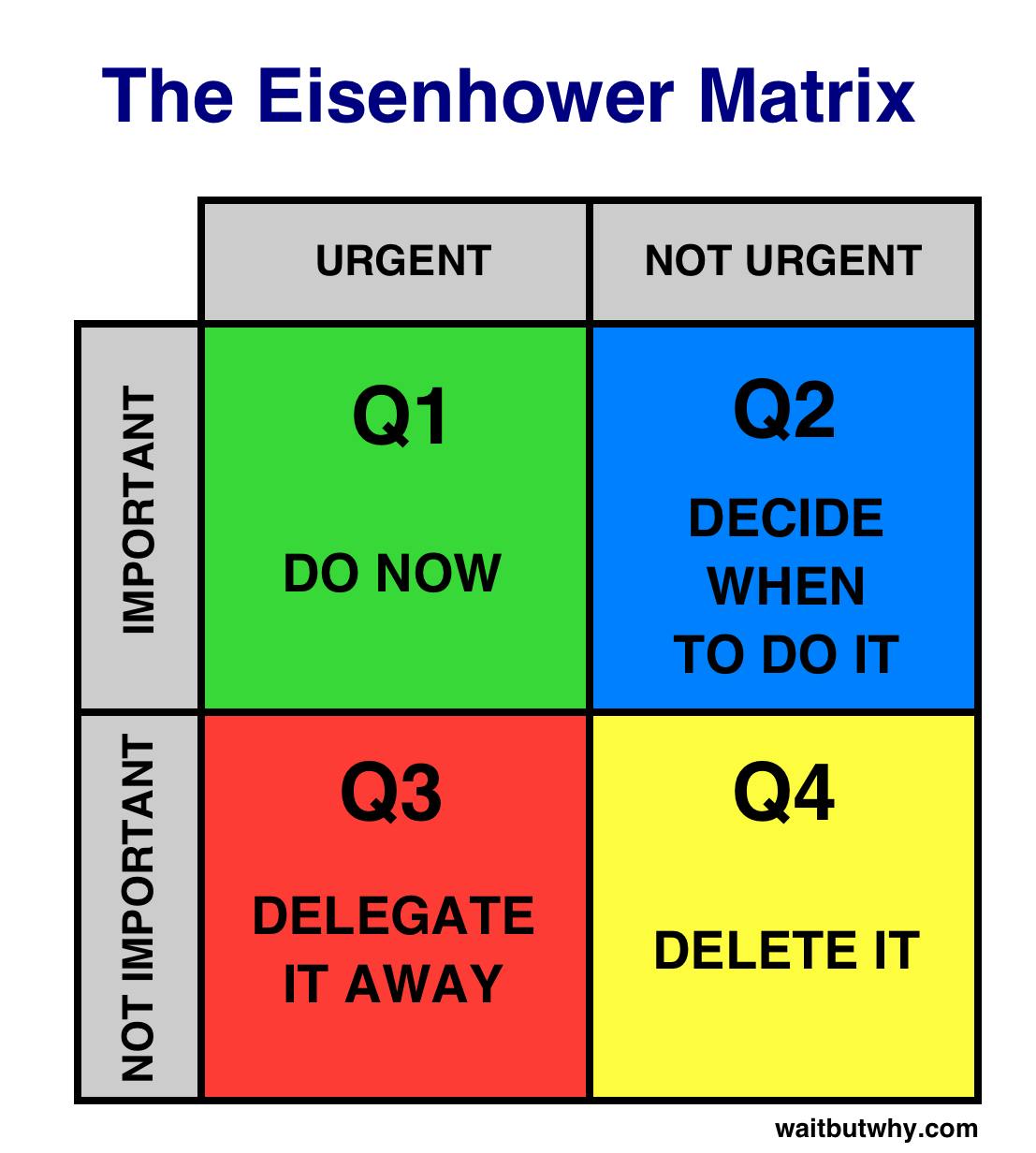
How to make productivity hacks work for you

In the modern era, increased productivity is on the mind of every employee and business leader. There are thousands of tips out there claiming to help us rattle through the most critical tasks. But do they work? Or are they creating more distractions?

Here, we explore two popular systems for productivity and explain why they are useful. Ultimately, the goal is to understand what helps you to get motivated and focused on your tasks.
It is important to note here that there are several tools dedicated to team productivity and project management. These guidelines focus on productivity for individuals, rather than teams.
Popular productivity systems
The Eisenhower Matrix
Former U.S. President Dwight D. Eisenhower had to make tough decisions every day about which of the many tasks he had to do was most critical. To make this process easier, he came up with an accessible system known as the Eisenhower Matrix.
This diagram explains how to set the matrix up. On one axis, you consider whether your tasks are important or not. On the second axis, you think about whether the tasks are urgent or not. This system helps you to place tasks on the grid and identify which you need to prioritize:

Rather than have a long list of items circling in your head, the matrix organizes tasks into categories to identify which are the most pressing. The tasks that need to be done first are those that are both important and urgent. Using this system can both reduce stress and increase focus.
The Pomodoro technique
This is a time management trick developed by Francesco Cirillo in the late 1980s. The idea is to tackle a piece of work you need to get done in 25-minute intervals, followed by a short break. Follow these steps to get started:
- Choose your most urgent piece of work
- Set a timer for 25 minutes
- Focus solely on tackling the task (don’t get distracted by anything else)
- Towards the end of the session, review your progress
- Take a five-minute break
- Repeat three more times, followed by a more extended break
Repeat this as many times as it takes to get a particular piece of work done. At the end of each session, record what you achieved, and your next goal.
Why does it work? One reason is our reward systems. If we promise ourselves a reward at the end of completing a section of work, such as a break, we are more extrinsically motivated to complete the task. Extrinsic motivation can help us get started, particularly with tasks that are not interesting. Awareness of how you are spending your time also helps you to become more focused.
This article also includes an extensive list of helpful suggestions for boosting productivity.
Finding a system that works for you
Whether or not productivity hacks will work depends entirely on your personality. If you are easily distracted, tools that help you to remain focused will make all the difference. If you are naturally diligent and conscientious, you might be able to forgo them altogether. The most important thing is that you tailor systems. These tips might help you to form strategies that work for you:
1. Think about your personality
Your personality plays a huge role in your ability to be productive and how best to overcome slowed output.
There are certain traits in our personalities that remain fixed throughout life. The ‘Big Five’ personality traits are currently the most accurate measure we have of our characters. The five-factor model is organized into extraversion-introversion, openness to experience, conscientiousness, agreeableness, and neuroticism.
Research shows that where you sit on this scale remains relatively consistent throughout life, but you can take action to balance or accentuate certain traits when you need to.
Knowing where your personality sits can be hugely helpful and relevant to your ability to be productive. If you are introverted and work best in quiet environments, your focus will be dependent on being alone. Communicating with others often could be overwhelming, and you could quickly lose momentum.
2. Include reflection in the process
When testing out a new productivity hack, it is essential to build in time for reflection. If you don’t, you won’t know whether the system you’re using is working for you, or if you need to personalize it.
If you are using a time management technique like Pomodoro, be sure to include a minute or so for reflection at the end of each session. Record what you got done, and whether or not that met your target.
If your targets are consistently higher than what you can achieve, you might need to adjust your expectations for what you can get done in a given amount of time.
3. The ultimate goal is awareness
The American Psychological Association explains that growing your attention span is one of the most effective ways to boost productivity.
Many productivity hacks are designed to improve focus on a single task. When you are testing out a new tool, reflect on whether it helps you reach a state of deep concentration.
If you can be aware of what you are doing at any given time, rather than lost in thought, you will be more productive and happier. The brain is only capable of doing one task at a time, and you risk reaching cognitive overload if you attempt too much at once.
4. Communicate your priorities to your team
One of the biggest distractions at work is instant messaging, emails, and notifications. Sometimes, messages will be both important and urgent, but you can’t set up your entire day waiting for a task like this to come in.
Trust that, in most cases, if you switch your notifications off while you are focusing on a particular task that the world won’t fall apart! This attitude can be challenging if you are in a position of responsibility. Ultimately, if you can focus on urgent tasks when you need to, you will be a better leader and provide better support to your team.
For more insights, be sure to subscribe to the Go1 newsletter to stay on top of all the latest L&D trends. Or, you can book a demo today to find out how Go1 can help with your team’s learning needs.
Sophia is a freelance writer who specialises in thought leadership, opinion pieces and content creation for learning publications. Her work focuses on the latest research in learning theory and practice. She regularly contributes articles on workplace learning and personal development to the Go1 blog. You can connect with her on LinkedIn.




